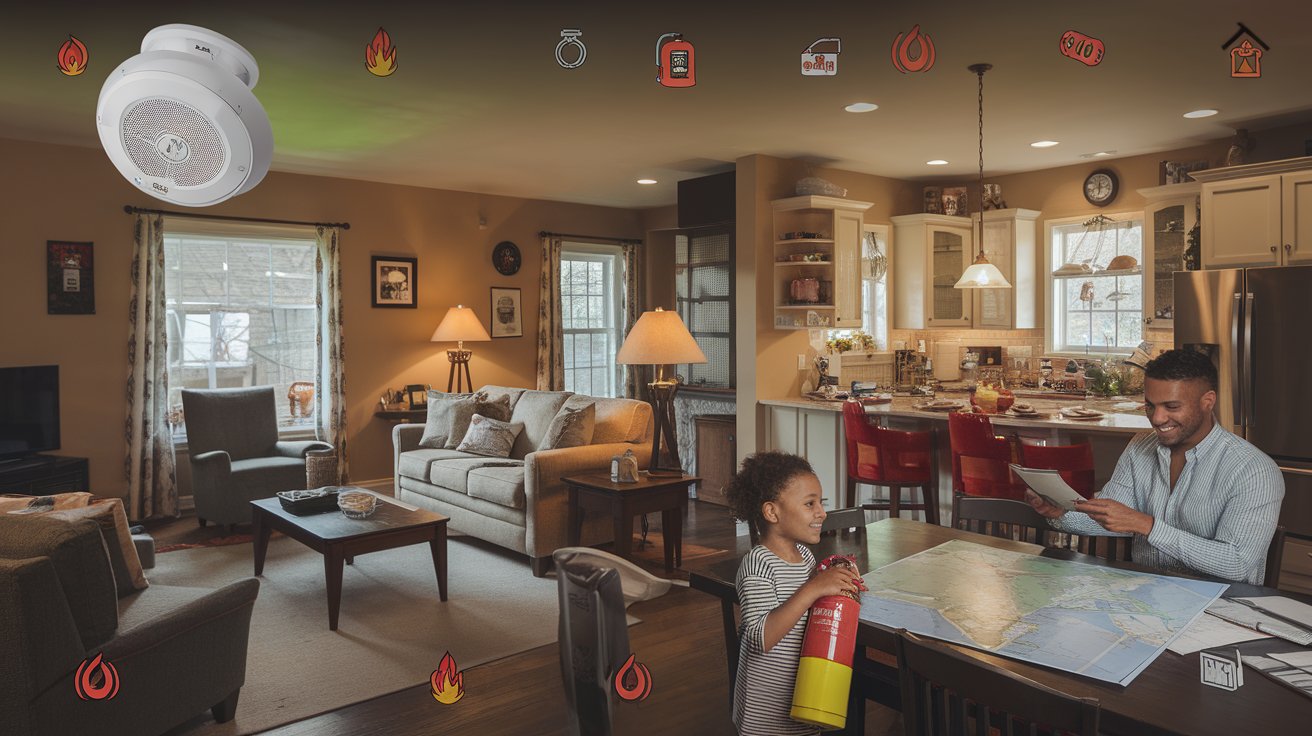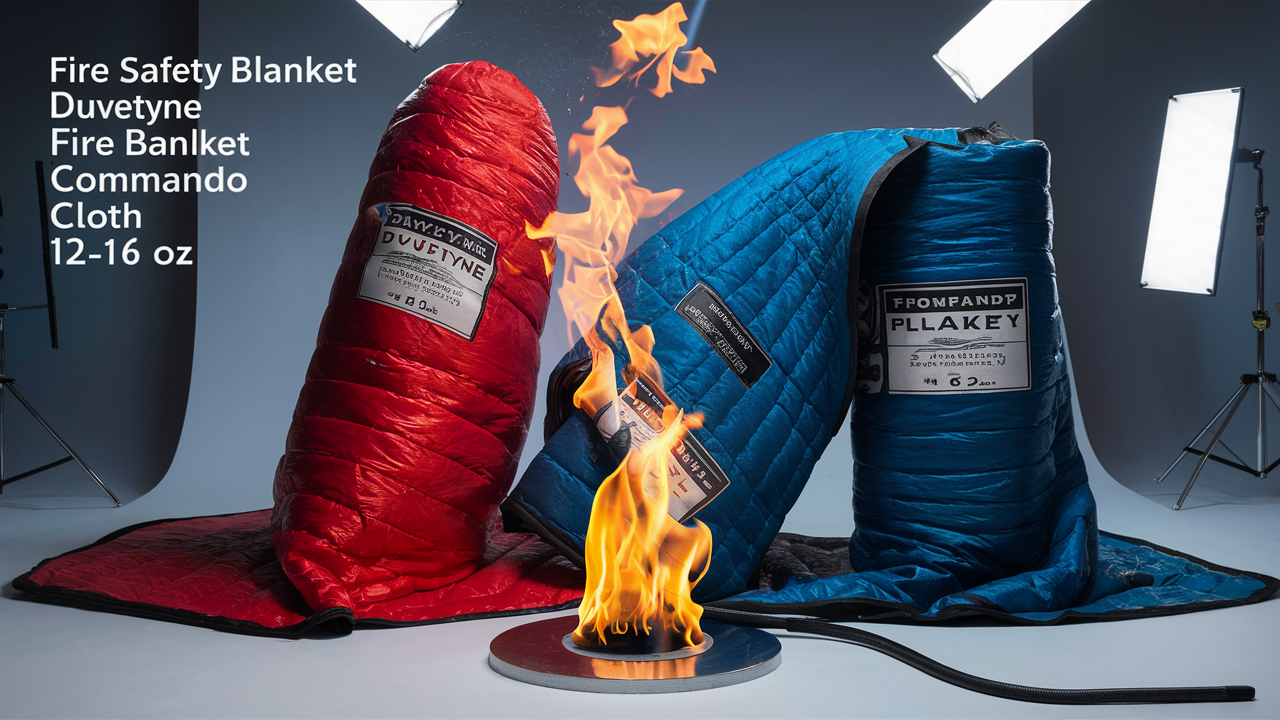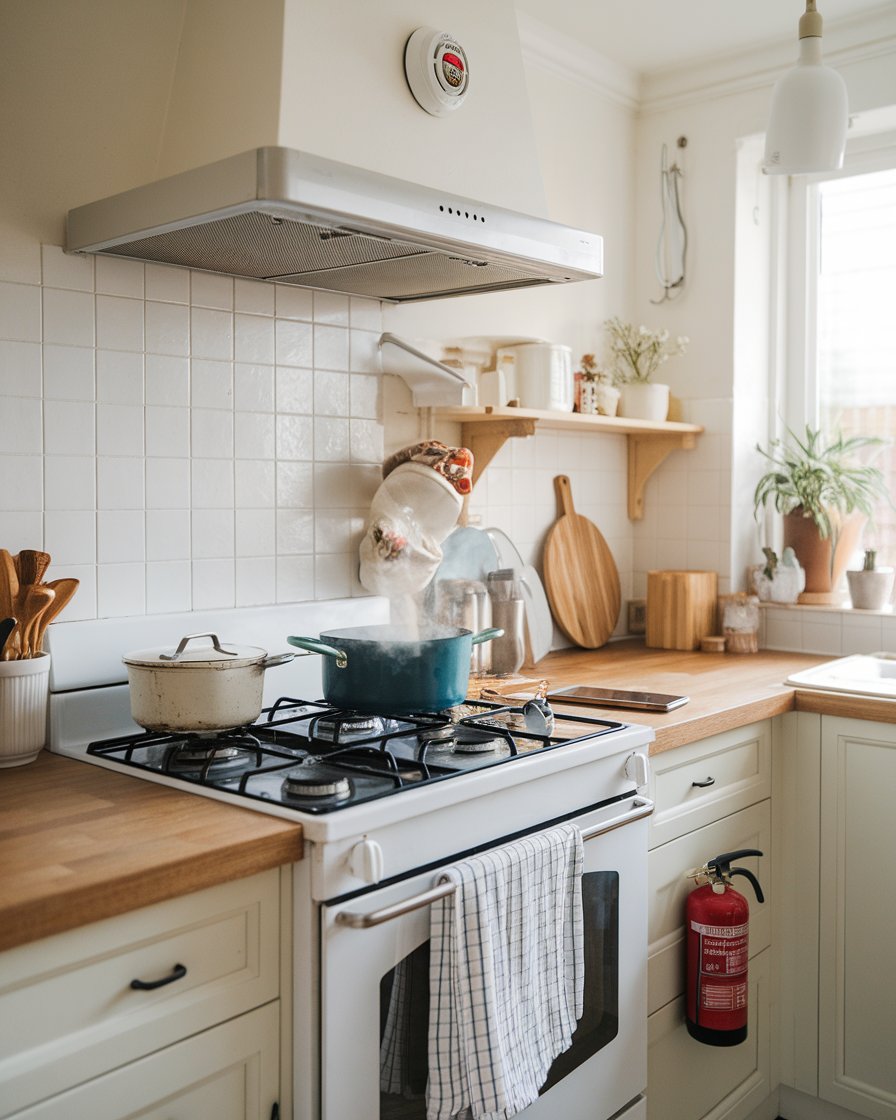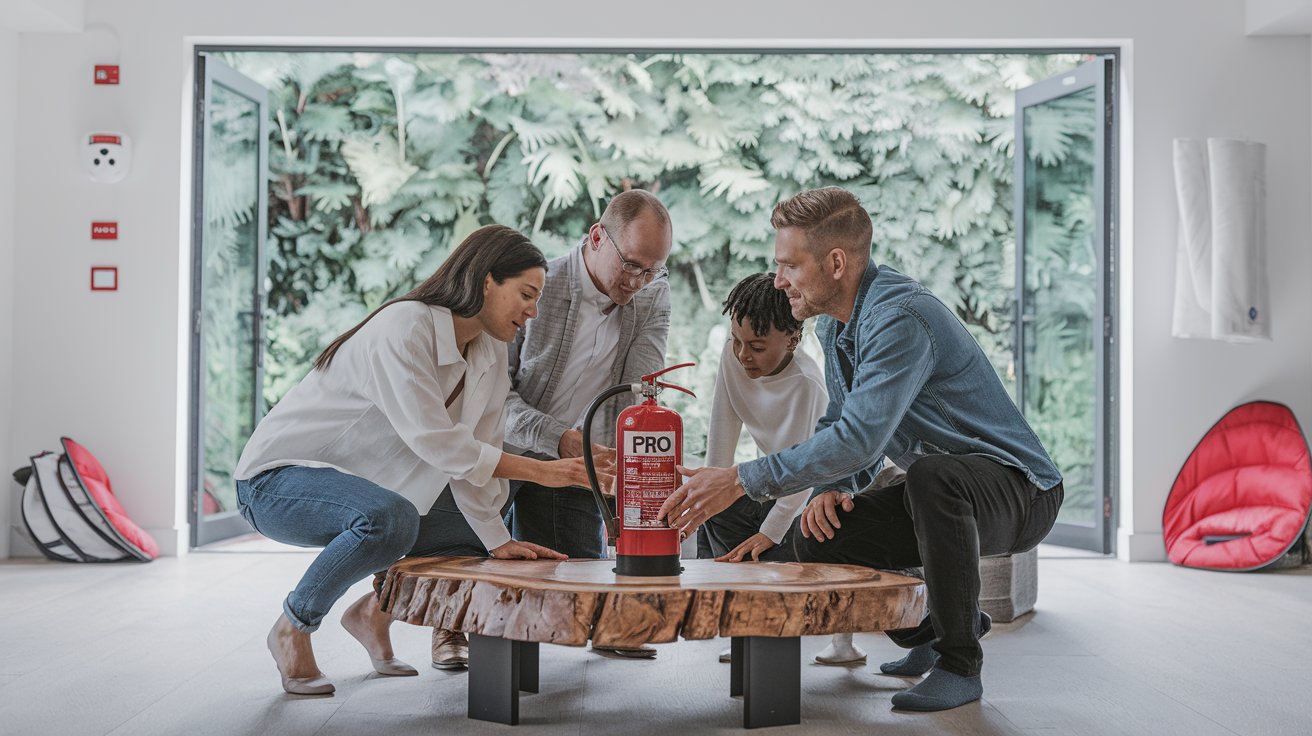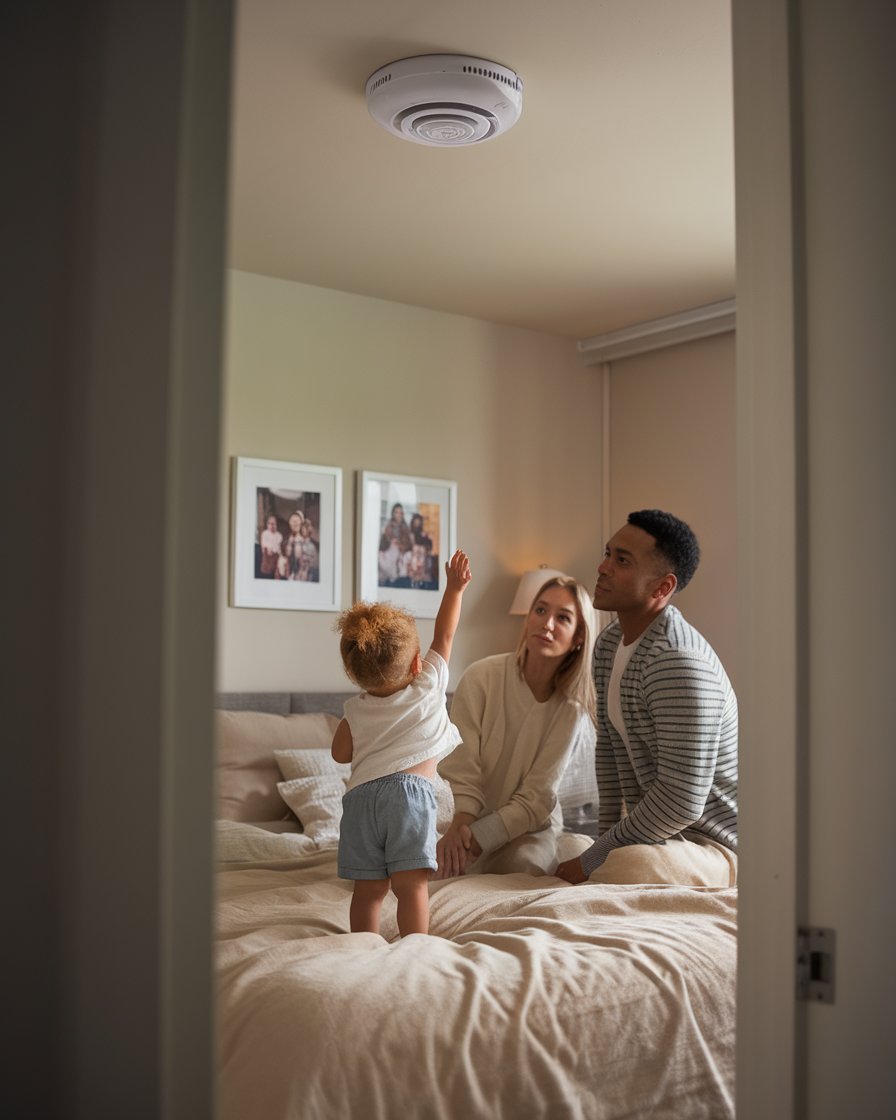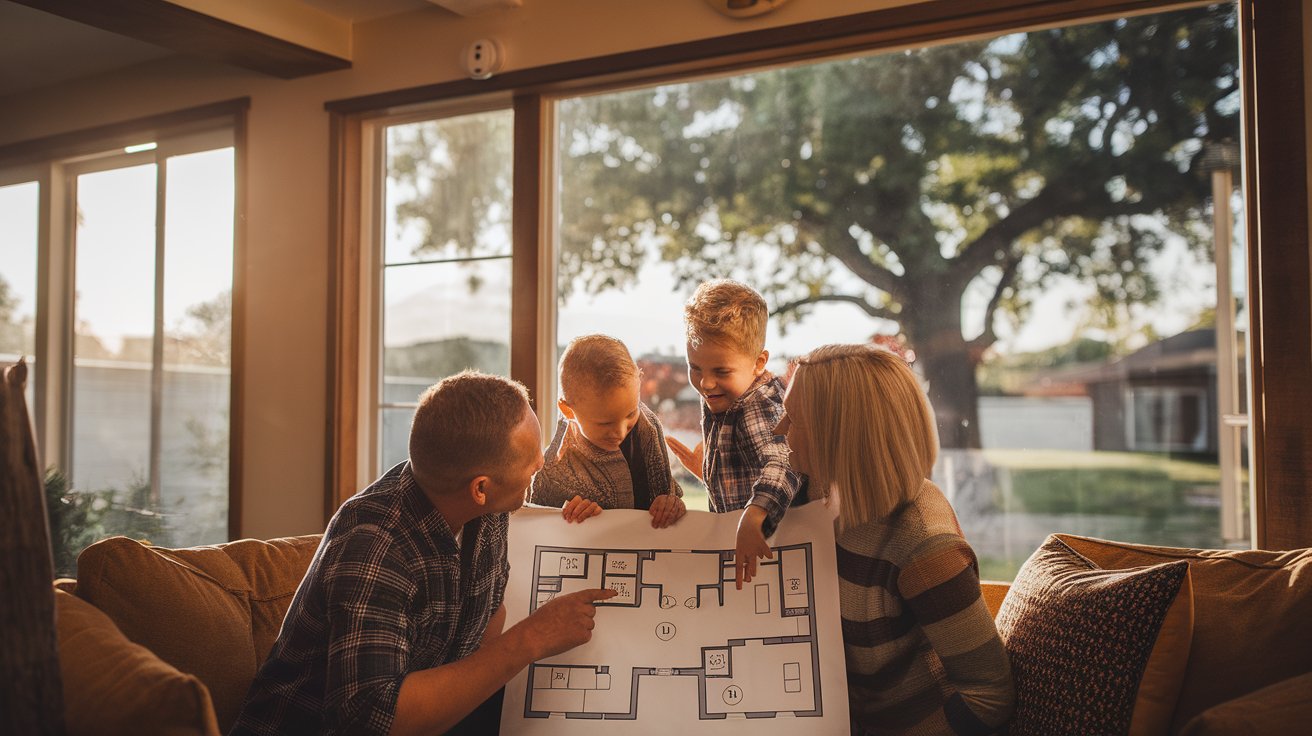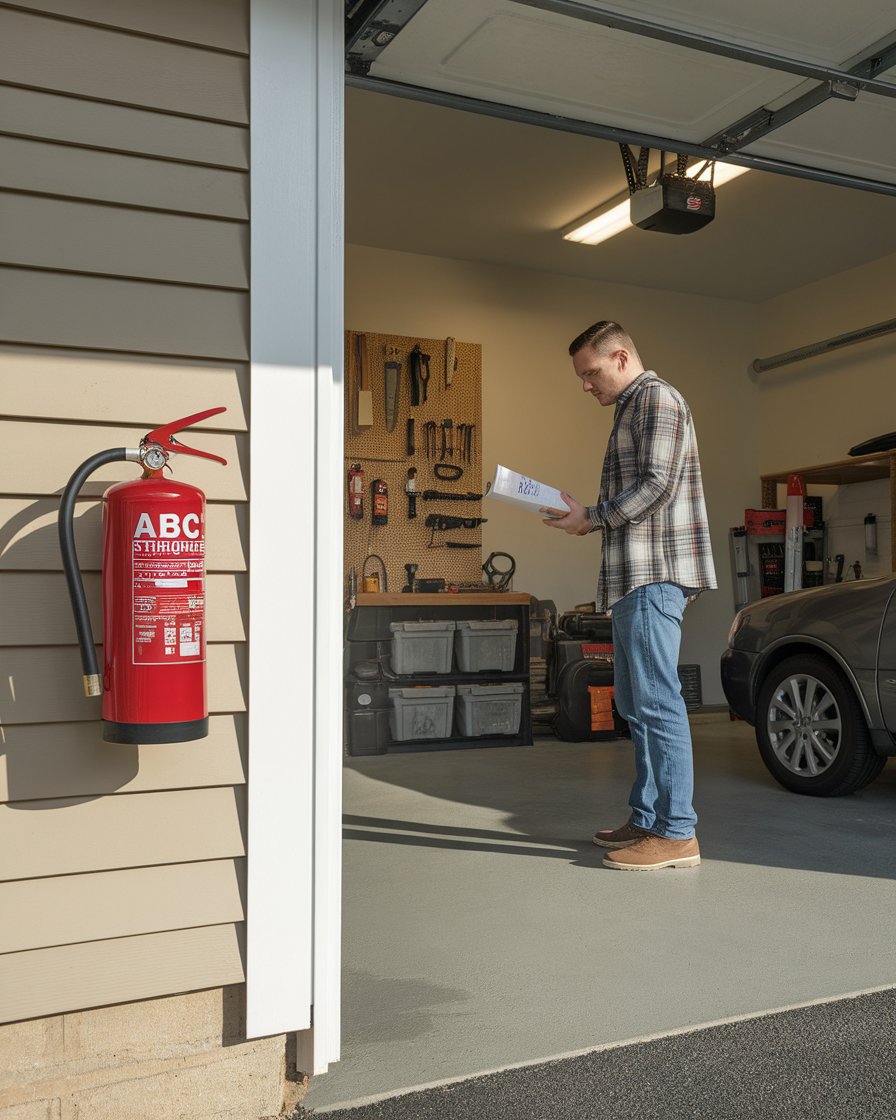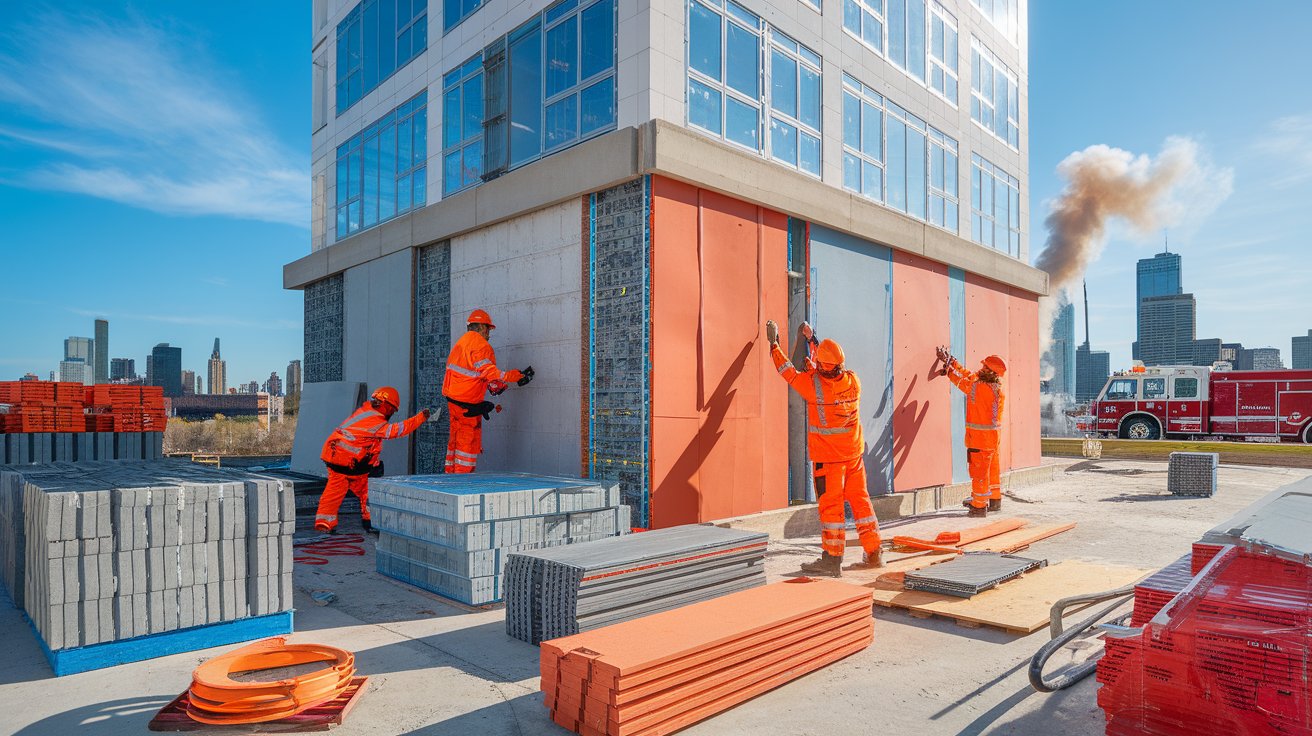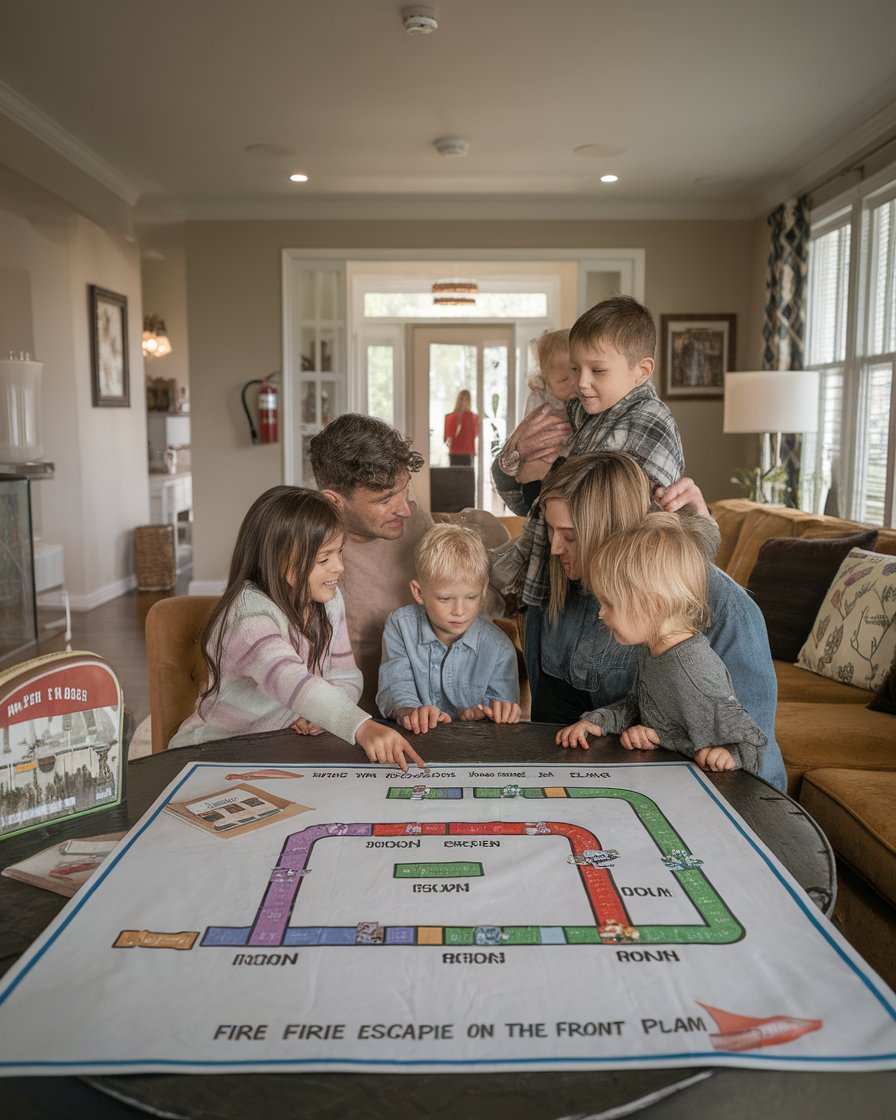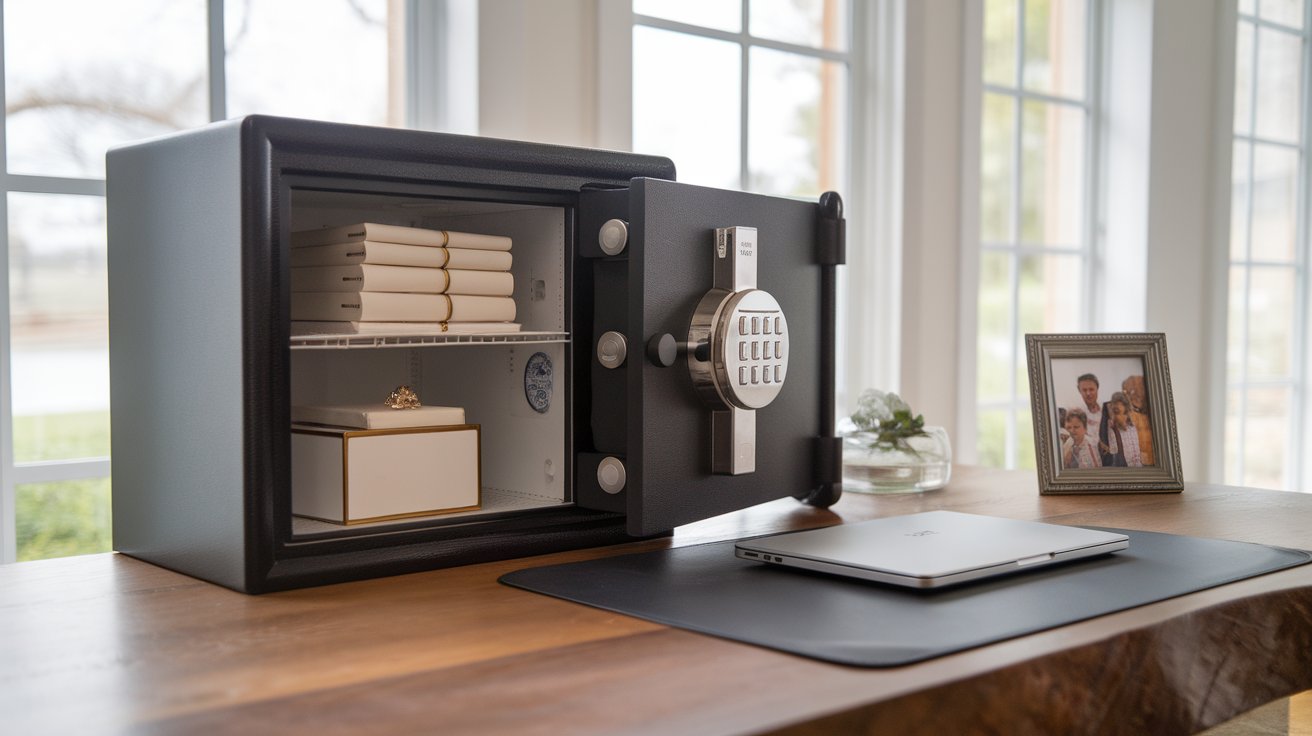Introduction
Fire safety is a big deal when it comes to keeping your home and family safe. It’s not just about having the right gear like smoke alarms or a fire extinguisher, but also knowing how to avoid everyday hazards that could lead to trouble. Think about that unattended grill in the backyard or forgetting to check the batteries in your smoke detector. These small things can add up to big problems fast. It’s also smart to know what to do if something goes wrong. Your local fire department can give you important tips and checklists to help make sure your home is as safe as possible.
One of the best ways to be ready for an emergency is to practice a fire escape plan with everyone in your house. Make sure you have two exits from each room and know where to meet outside. Keep flammable materials like wood and rugs at least three feet away from heat sources. Also, remember to follow manufacturer instructions on safety equipment like smoke alarms and extinguishers. Being prepared could save lives if something goes wrong.
Key Takeaways
Homeowners should install smoke alarms and carbon monoxide detectors to catch early fire risks and create a fire escape plan.
Keeping flammable objects at least three feet away from heat sources like stoves and space heaters can prevent fires.
Every home needs an ABC-rated fire extinguisher in key areas like the kitchen and garage to handle different fire types.
Regularly testing smoke alarms and replacing batteries annually is crucial for ensuring they work during an emergency.
Practicing a fire escape plan with two exits from each room helps ensure everyone knows what to do in case of a fire.
Knowing how to use a fire extinguisher and keeping it accessible can prevent small fires from becoming major disasters.
Fire Safety Hazards in the Home
Home fire safety is something every homeowner should take seriously. Understanding fire risks and taking preventative steps can help reduce the chances of a house fire. Common fire hazards, such as faulty wiring, unattended appliances, and heating equipment, can turn into dangerous situations quickly. To prevent fires, installing smoke detectors and carbon monoxide detectors is vital. These devices act as an early warning system, giving residents time to create an escape plan and avoid major fire damage. Additionally, keeping a fire extinguisher nearby, especially in the kitchen, ensures you’re prepared in the event of a fire. It’s also essential to check cords and appliances regularly to avoid fire risks. Preventing home fires means being proactive about safety.
Essential Home Fire Safety Tips for Homeowners Prevention 2024
Install and Maintain Smoke Alarms
Smoke alarms are your first line of defense against house fires. Make sure you install them on every level of your home, including inside bedrooms. Regularly test them to ensure they are working, and replace the batteries at least once a year. It’s also important to replace smoke alarms every 10 years to ensure they’re fully operational.Use Fire Extinguishers in Key Areas
Having a fire extinguisher in critical areas like the kitchen and garage is crucial. An ABC-rated fire extinguisher can handle different types of fires, such as those caused by wood, grease, and electrical appliances. Be sure to know how to use it effectively and keep it accessible for emergencies.Create a Fire Escape Plan
Every family should have a fire escape plan with at least two exits from every room. Practice this plan with everyone in the household, especially children. Identify a safe meeting spot outside and ensure every member knows where to go in case of a fire emergency. Regular drills can make all the difference during a real fire.Keep Flammable Objects Away from Heat Sources
Whether it’s space heaters, stovetops, or fireplaces, keeping flammable objects like towels, paper, and curtains at least three feet away from heat sources can prevent fires from starting. Ensure your indoors are free of clutter, and don’t leave these areas unattended when in use.Practice Safe Cooking Habits
The kitchen is a common area for fire hazards, especially when cooking with grease or using high heat. Always stay in the kitchen while cooking, and keep a fire extinguisher nearby. Regularly inspect your cooking appliances, such as microwaves and ovens, for signs of faulty wiring.Follow Manufacturer Instructions for Heating Equipment
When using space heaters or fireplaces, always follow the manufacturer’s guidelines to avoid risks like overfilling fuel tanks or using faulty cords. Place heaters on nonflammable surfaces and keep them at least three feet away from combustible materials like bedding or curtains. This reduces the risk of accidental fires.
Kitchen Safety Measures
The kitchen is one of the most common areas where house fires start, making it crucial to stay vigilant. Homeowners should always stay in the kitchen while cooking, especially when using high heat or grease. Flammable items like towels, wooden utensils, and paper should be kept at least three feet away from the stove. In addition, a fire extinguisher in your kitchen should be easily accessible to tackle small fires before they become major. It’s also essential to inspect electrical equipment, such as the oven or microwave, for faulty wiring. Following these fire safety tips in the kitchen can prevent dangerous situations and keep your home fireproof.
Home Heating Precautions
As the temperature drops, heating equipment becomes a leading source of home fire hazards. Using space heaters and fireplaces can be safe if proper precautions are taken. Always place heaters on nonflammable surfaces and keep them at least three feet away from flammable materials like curtains or bedding. Homeowners should also follow the manufacturer’s instructions to avoid overfilling fuel-based heaters or using faulty cords. It’s important to replace the batteries in smoke alarms and carbon monoxide detectors regularly to ensure they work properly. Fire prevention isn’t just about the tools in place but also about being alert to potential risks like embers from the fireplace or frayed heater cords.
Smoke Alarms and Their Significance
Smoke alarms are essential for fire safety in every home, acting as the first line of defense when a fire breaks out. These devices provide early warnings, giving you valuable time to respond and exit the home. Smoke alarms significantly reduce the risk of fatalities during home fires. Installing them in key areas can help prevent small flames from turning into large, uncontrollable fires. A smoke alarm can detect smoke early, allowing residents to practice their fire escape plan efficiently. Ensuring your smoke alarms are in working order and placed correctly helps protect your loved ones and property from potential fire risks.
Case Study: Impact of Proper Smoke Alarm Installation in Reducing Home Fire Fatalities
In 2019, a detailed case study conducted by the National Fire Protection Association (NFPA) highlighted the effectiveness of smoke alarms in preventing fire-related deaths in residential homes. The study revealed that homes equipped with working smoke alarms experienced a 50% lower risk of fatalities compared to homes without them. In one notable incident, a fire broke out in a two-story home in California. Due to proper smoke alarm placement in every bedroom and hallway, the family was alerted within seconds, allowing them to escape safely before the fire escalated. Conversely, a neighboring home without smoke alarms suffered a tragic loss in a similar fire scenario. This case underscores the importance of not only installing smoke alarms but ensuring they are maintained regularly and placed in key areas like bedrooms and kitchens. Early detection saves lives and prevents small flames from becoming uncontrollable disasters.
Placement of Smoke Alarms
The placement of smoke alarms plays a crucial role in their effectiveness. Alarms should be installed inside each bedroom, outside sleeping areas, and on every level of the home, including the basement. Properly placed smoke alarms increase the likelihood of alerting everyone in the house, ensuring you have time to extinguish small flames or evacuate safely. Placing alarms near heat sources, vents, and potential fire hazards like kitchens can also help prevent fire-related accidents. For homes with pets, keeping alarms in areas they frequent ensures that even they are protected. Strategic placement is key to comprehensive fire safety coverage throughout the house.
Maintenance Tips for Smoke Alarms
Maintaining your smoke alarms is essential to ensuring they work when needed. It’s a good practice to test them monthly by pressing the test button. Batteries should be replaced at least once a year, and smoke alarms themselves need to be replaced every 10 years. Keeping flammable objects away from heat sources and regularly inspecting these devices is vital. Alarms should also be free of dust and debris that could affect their sensors. Always follow the manufacturer’s instructions to avoid any malfunctions. These simple maintenance steps can greatly reduce the risk of fires and enhance overall home safety.
Fire Extinguishers for Home Use
Fire extinguishers are an essential tool for home fire safety. Having one readily available can prevent a small fire from turning into a major disaster. Every household should be equipped with at least one fire extinguisher, particularly in high-risk areas like the kitchen and garage. It’s important to know that different types of fires require different extinguishers, so selecting the right one is critical. For general home use, an ABC-rated extinguisher is highly recommended, as it can tackle various fires, including those caused by wood, flammable liquids, and electrical equipment. Regularly checking that the extinguisher is in working order is equally important for overall fire prevention.
Choosing the Right Fire Extinguisher
Selecting the right fire extinguisher is key to keeping your home safe from fires. Homeowners should choose a multi-purpose extinguisher labeled “ABC” to handle fires caused by ordinary combustibles like wood, flammable liquids such as grease, and electrical equipment. Having at least one fire extinguisher on every level of the home ensures quick access in case of an emergency. For optimal safety, it’s a good idea to place extinguishers in areas prone to fires, like kitchens and garages. Additionally, make sure the extinguishers are placed at least 10 feet away from potential heat sources to avoid accidents while trying to prevent fires.
Proper Usage of Fire Extinguishers
Knowing how to use a fire extinguisher correctly can save lives in the event of a fire. The easy-to-remember acronym PASS—Pull the pin, Aim at the base of the fire, Squeeze the handle, and Sweep from side to side—provides a simple guide for proper usage. Homeowners should ensure that everyone in the household knows where the extinguishers are located and understands how to operate them. It’s also important to review the manufacturer’s instructions and conduct regular practice drills as part of a broader fire escape plan. With proper training, a fire extinguisher becomes a vital tool for home safety.
“An ounce of prevention is worth a pound of cure.” – Benjamin Franklin
Creating a Fire Escape Plan
Developing a fire escape plan is one of the most important steps a family can take to ensure safety in the event of a home fire. A well-prepared escape plan can save lives by giving everyone in the house clear instructions on how to evacuate quickly and safely. Each family member should know at least two ways to exit every room, whether it’s through doors or windows. Establishing a designated outdoor meeting spot helps account for everyone quickly and allows first responders to focus on the fire, rather than searching for missing occupants. A solid fire escape plan can make all the difference during an emergency.
Key Elements of a Fire Escape Plan
A successful fire escape plan includes several key components. First, it’s crucial to identify at least two exits from each room, which may involve windows leading outdoors or doors connecting to hallways. Additionally, the plan should account for family members with specific needs, such as young children or pets, ensuring their safe evacuation. A designated meeting point outside is essential for ensuring all family members are accounted for. Knowing this location helps first responders focus on firefighting, rather than searching for anyone still inside. Incorporating these elements into the plan ensures that everyone knows what to do and where to go when disaster strikes.
Practice and Preparedness
Regular practice of the fire escape plan is essential to ensure everyone is prepared. Families should practice their plan at least twice a year, simulating different scenarios such as blocked exits or fires occurring at night. These fire drills help reduce panic during a real emergency by familiarizing family members with the steps they need to take. It’s also important to practice using alternate routes in case the primary exit is inaccessible. This preparedness can prevent confusion and enable a calm, efficient evacuation. Additionally, reviewing prevention tips and maintaining smoke alarms ensures that you’re ready for any fire-related incident.
Conclusion
To wrap it all up, being indoors doesn’t mean you’re safe from fire risks. You’ve got to stay on top of things like checking your smoke alarms and placing fire extinguishers where you can reach them fast. It’s just as important to be smart with flameless candles—make sure they’re kept at least three feet away from anything that could catch fire, like curtains or furniture. Don’t forget to keep your family in the loop and practice what to do in case of a fire. These are some solid tips to consider for staying safe.
Another big part of fire safety is your fire escape plan. Make sure everyone in the house knows it, and practice it regularly. Checking your thermostat and fire alarms should be a regular habit too. Simple steps like these, along with keeping an eye on your furnace, could help prevent a real emergency. Keep things safe, stay alert, and always be ready.

